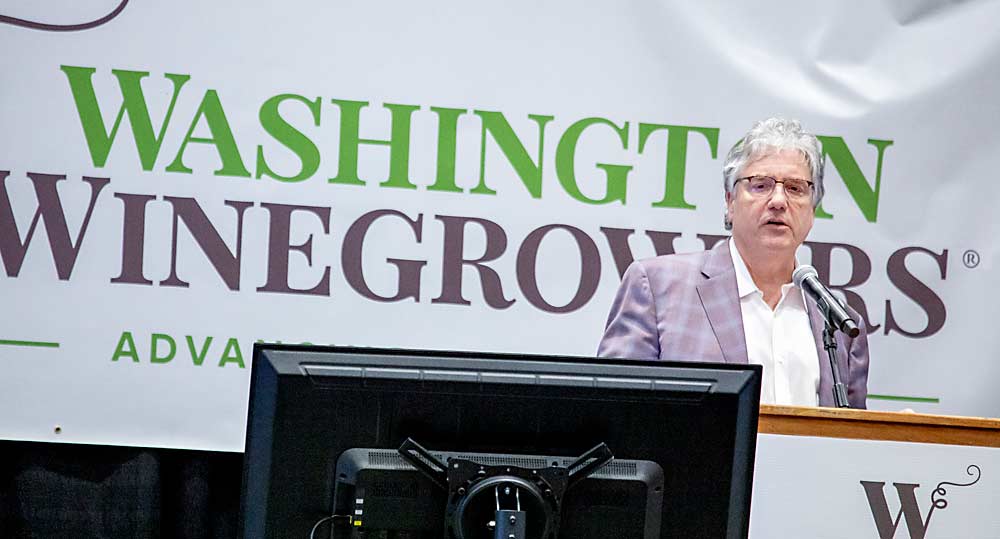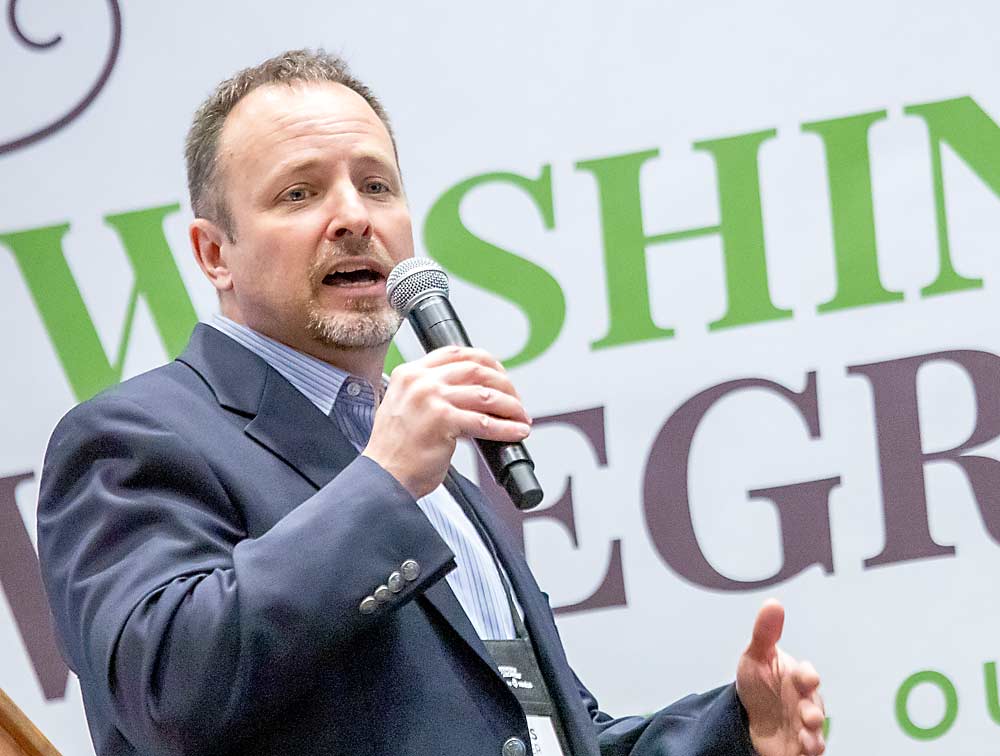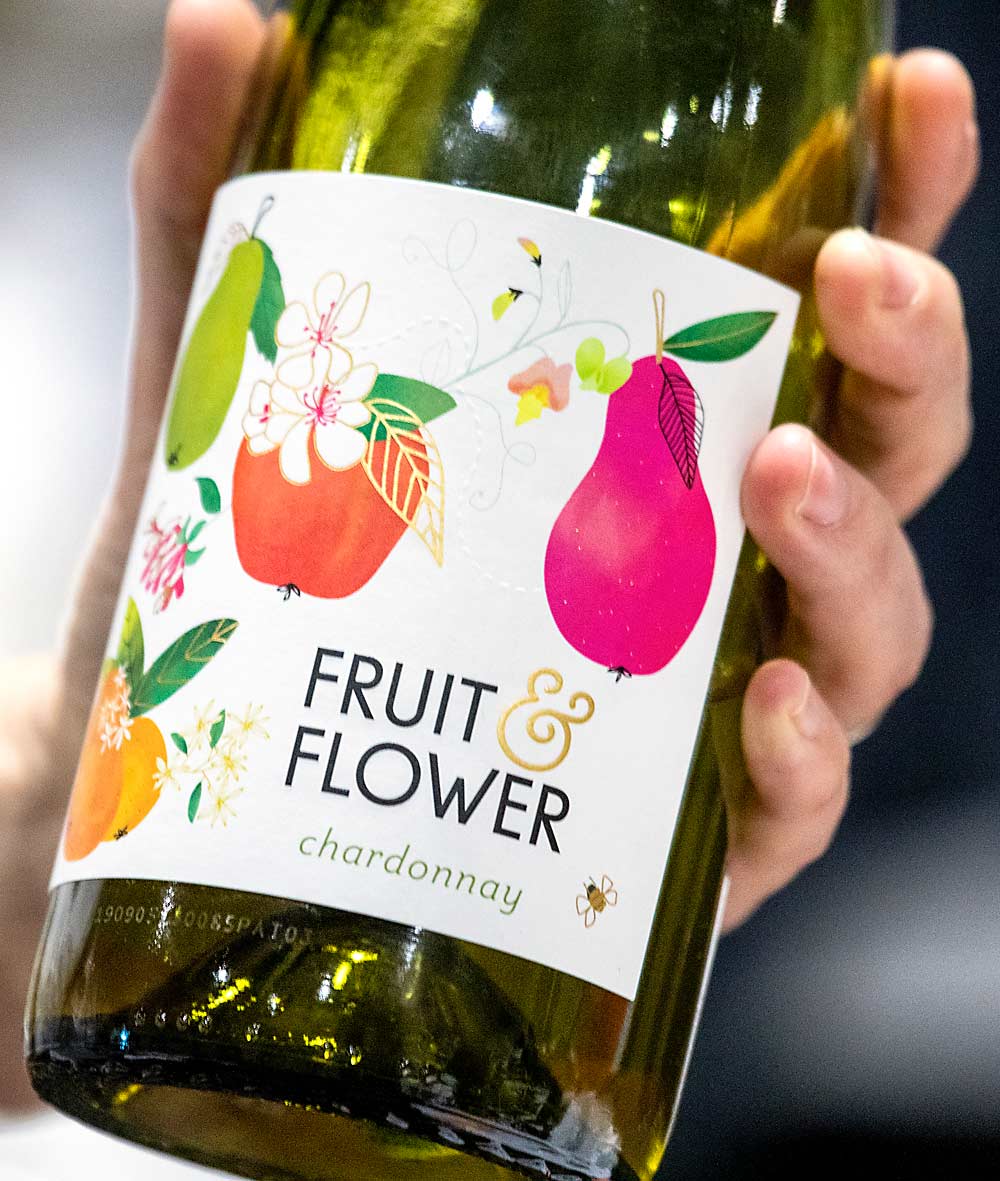
Flush with more options than ever for alcoholic beverages and increasingly seeking healthy choices and moderation, Americans just don’t drink as much wine as they used to.
That’s a problem for Washington’s wine grape industry, which is producing some 40,000 more tons of grapes annually than wineries want, according to economist Chris Bitter of Vintage Economics. To balance supply and demand, the industry needs to either find new markets to take 3 million more cases a year — in addition to the 12.5 million already produced — or rip out about 8,000 acres of the state’s 60,000 acres currently planted.
Bitter shared his outlook as part of the State of the Industry panel at the Washington Winegrowers Association’s annual meeting in Kennewick in March. Other speakers included Ste. Michelle Wine Estates CEO Jim Mortensen, Silicon Valley Bank wine division head Rob McMillan, Wine Intelligence CEO Lulie Halstead, and master of wine Doug Frost. All spoke about the need for innovation to help the industry move through the present period of oversupply.

Washington’s larger wineries have struggled the most in recent years — growth at Ste. Michelle, which crushes about two-thirds of Washington’s grapes, peaked in 2016 — but small wineries still see growth, Bitter said.
“We have indeed underperformed the market since 2016,” said Mortensen, who took the helm at Washington’s largest winery in 2018. Washington-grown wines comprise 80 percent of the company, which shipped 8.2 million cases last year. In 2016, it shipped 9.3 million.
Mortensen shared several new approaches the company has undertaken to drive product innovation and marketing based on consumer insights, similar to the strategies other speakers suggested.
Marketing to millennials

Wine needs new consumers, said Silicon Valley Bank’s McMillan, after sharing figures showing the flat rate of U.S. consumption. The baby boomer generation drove the growth that built the West Coast wine industry to its current point, but now they are retiring, reducing their income and moderating their drinking. Meanwhile, millennials just don’t drink as much wine as boomers or Generation X.
“Our competition isn’t foreign wine imports: It’s spirits, seltzer and craft beer,” McMillan said. And he rejected the idea that the wine industry can just wait for the “kids” to grow up into wine-loyal consumers.
“The notion that we just need to wait, to me, is a silly one,” McMillan said. “Boomers did move into wine over time, but it was a different time. Beer sucked in the ’90s. The only thing that was good was wine.”
Young consumers — millennials and Gen Z, who are now entering legal drinking age — have different values that the wine industry needs to heed, he said, such as social and environmental responsibility. Luxury doesn’t sell the way it did for their parents.
Instead, he suggests making over tasting rooms into more fun, social experiences. “We need younger people in our tasting rooms,” he said. He also suggested embracing more ready-to-drink packaging such as cans or tiny bottles, to give cost-conscious consumers trial options.
Conversations with consumers — especially younger consumers — show strong trends toward health-conscious choices and natural messaging, Halstead said. People tell her they want natural, low-calorie beverages with no artificial flavors or sugars, but then they also say they love hard seltzer.
That disconnect shows an opportunity that’s ripe for the wine industry to capture. “Wine is the beverage young consumers want, they just don’t know it,” McMillan said.
New opportunities
Under Mortensen’s leadership, Ste. Michelle has shaken up some of its product development and marketing for the modern age, and he shared some of the company’s new initiatives to compete for younger consumers without compromising on quality.
The hard seltzer boom is enemy No. 1, Mortensen said, but understanding why consumers are drawn to these new products can improve Ste. Michelle’s ability to sell wine to them.
For example, some consumers expect to see calorie counts, so they know their purchase choice suits their health-conscious lifestyle. This year, Ste. Michelle will launch a new Sauvignon Blanc brand called Liquid Light, targeting those consumers.

“You’ll see more of this from us,” Mortensen said. “You can’t win a new game with an old game plan.”
Packaging in cans — a move the company first made with its 14 Hands brand in 2019 — has also proved successful, moving the wine from the bottom of the shelf to the top and resonating with consumers who want an on-the-go beverage for a game of golf or camping trip. More cans and single-serve bottles will be rolling out soon, encouraging shoppers to try new products at a lower price point for entry.
Mortensen also sees new opportunities for selling wine online, through a greater presence on wine.com and the Amazon.com grocery site.
In 2019, Ste. Michelle also entered the private label market — making wines to be sold under a retailer’s or restaurant’s own brand — to help absorb some of the oversupply, Mortensen said. The company shipped over 100,000 cases that way.
Industrywide, it’s going to take time to work through the oversupply. Wineries are sitting on an inventory of about 31 million cases worth of bottled and bulk wine, Bitter said. The freeze damage that cut Washington’s 2019 crush down from the expected 260,000 tons to about 200,000, will help to reduce that glut somewhat, but it doesn’t change the big-picture inventory problem.
Washington has ample advantages in the flat national market but needs new ideas to compete and grow market share, he said. “Until we know who is going to lead volume growth, we have to temper our expectations.”
—by Kate Prengaman
Related:
—Consumer conscious wine marketing






Leave A Comment